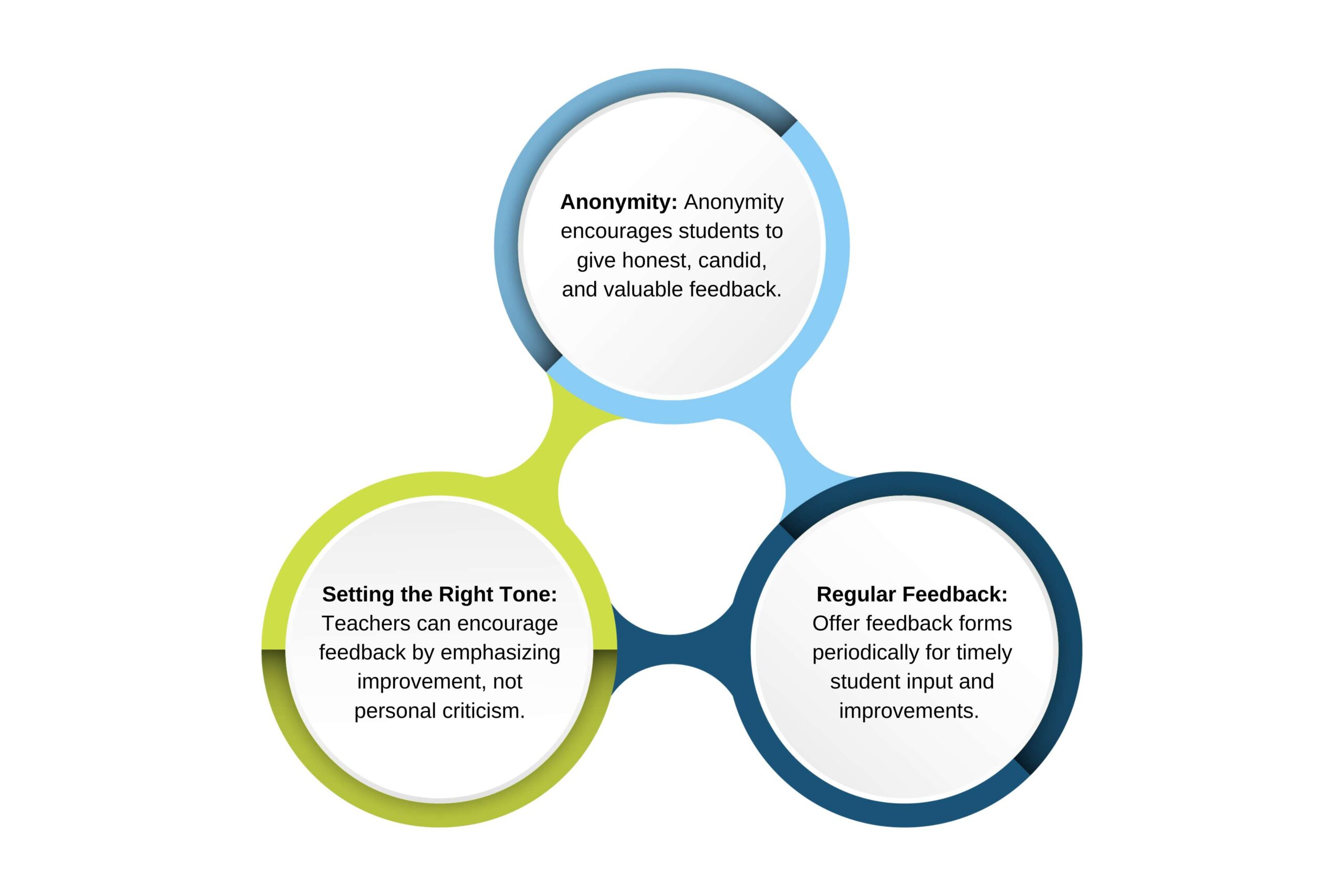Have you ever got any feedback form? Well, there are many feedback forms out there but I am talking about student-teacher feedback form. But what is this form about? It’s a tool used to collect feedback from students about their teacher’s performance and teaching methods. It has questions about the clarity of instructions, engagement in the classroom, communication, etc. Student teacher feedback form helps teachers understand their strengths and areas for improvement, promoting a more effective learning environment. In this guide, we will explore essential elements of a strong feedback form, including the use of open-ended questions, rating scales, and striking the right balance between constructive criticism and positive reinforcement.
Why a Student Teacher Feedback Form is Important?
These forms are very fundamental for the student and teacher, because the information on them provides educators with clues on teaching effectiveness, highlighting both strength areas and weaknesses. The fact that such forms facilitate open communication between students and teachers enhances a positive learning environment where feedback is used constructively. This helps teachers adjust their strategies of delivering instruction and meet the needs and reactions of their class, enhance engagement, and thus improve the desired outcomes for students. Regular feedback helps build trust, showing students that their opinions matter and contributing to a more dynamic, responsive, and student-centered educational experience.
Essential Elements of an Effective Feedback Form
To create a feedback form that is both insightful and constructive, certain key elements should be included:
1. Open-ended Questions

Open-ended questions are a crucial part of any Student Teacher Feedback Form because they allow students to share thoughts beyond simple “yes” or “no” answers. These questions encourage detailed feedback and can highlight specific areas that may not be covered by rating scales. For example:
These types of questions allow students to express themselves freely, providing teachers with actionable insights.
2. Rating Scales
While open-ended questions are useful, it’s also helpful to incorporate rating scales to quantify certain aspects of teaching. A scale from 1 to 5, for instance, can measure a teacher’s clarity, preparedness, and ability to engage students. A well-rounded Student Teacher Feedback Form balances open feedback with these quantifiable metrics. Rating scales offer a quick way to gauge how students generally feel about specific elements of the course, which can be compared across different classes or semesters.
3. Balance Between Constructive Feedback and Appreciation

A Student Teacher Feedback Form must strike the right balance between constructive criticism and positive feedback. Encouraging students to reflect on what the teacher does well helps maintain morale and reinforces effective practices. Meanwhile, constructive feedback should be specific and forward-looking, allowing teachers to understand precisely what needs improvement without feeling demotivated.
For example:
- Constructive: “I found some of the explanations difficult to follow, especially in the unit on algebra. More examples could help clarify.”
- Appreciative: “The teacher was always willing to stay after class to help students who were struggling, which made me feel supported.”
This combination ensures that the feedback is both helpful and kind, fostering a positive atmosphere for improvement.
How to Encourage Honest and Useful Feedback?
One difficult part of having a Student Teacher Feedback Form in place is ensuring that students provide constructive, honest feedback However, in most cases, the students might hold back on criticizing him or her for fear of retribution, or they might not take it seriously because they do not believe that anything will come from filling out the form.
(Make Infographics)
Here are some tips to encourage authentic feedback:
- Anonymity: Anonymity encourages students to give honest, candid, and valuable feedback.
- Setting the Right Tone: Teachers can encourage feedback by emphasizing improvement, not personal criticism.
- Regular Feedback: Offer feedback forms periodically for timely student input and improvements.
Using Feedback for Professional Growth
Once the feedback has been collected, it’s important to use it constructively. For teachers, reading through a Feedback Form can sometimes be overwhelming, especially if the comments are critical. However, approaching the feedback with an open mind and a willingness to improve can turn it into a powerful tool for professional growth.

| How does Feedback help in Professional growth and student’s trust? |
Conclusion
A well-designed Student Teacher Feedback Form is sure to serve as a landmark in the processes of learning for students and teaching for instructors. Such questions set against a background of balanced constructive criticism and appreciation result in a setting for meaningful communication that incites professional development. Besides, honesty through anonymity and an open culture of feedback ensure value and authenticity in the insights that are gathered. These forms should be used consistently and thoughtfully in the classroom as a means to foster a class environment of continuous improvement, collaboration, and mutual respect.

